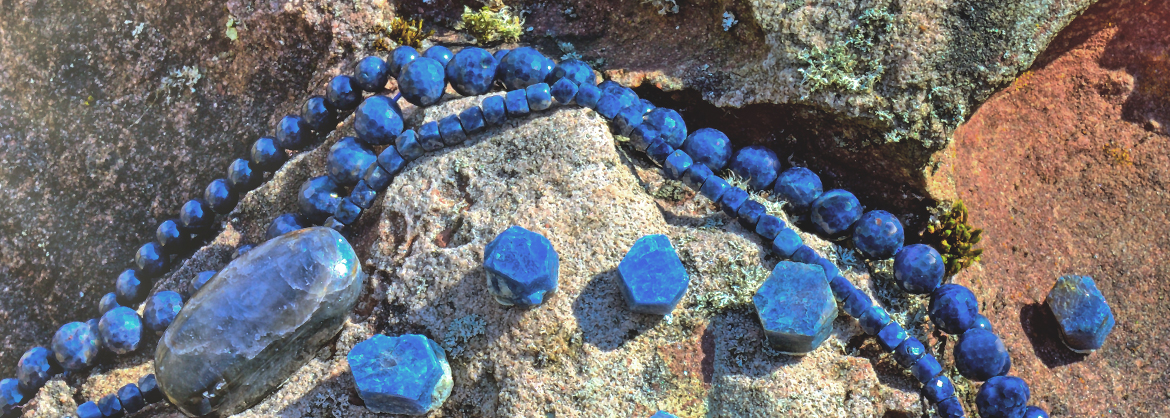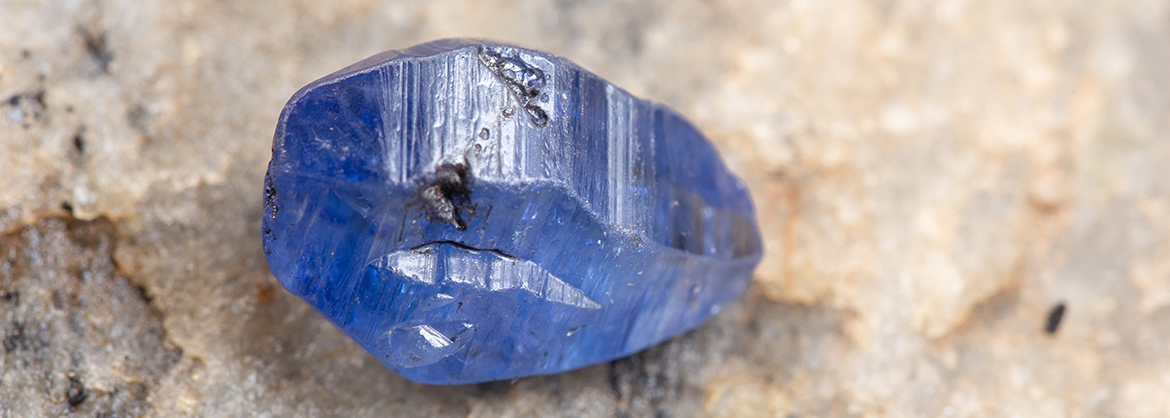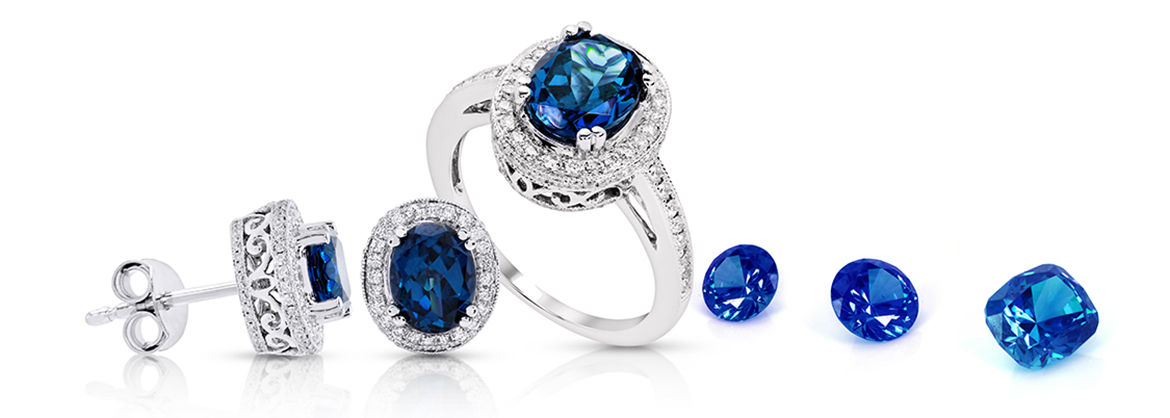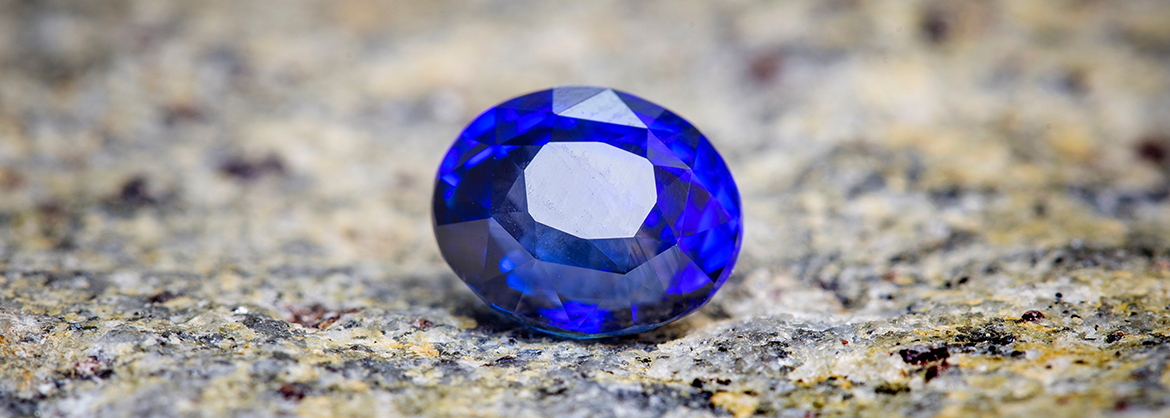
Sapphire - Bearing, meaning and application
Sapphire supports to direct the mental forces and abilities to a goal and to pursue it straightforwardly. The ability to criticize and the sober view of things are strengthened by the blue gemstone, the own life of an examination subjected. Thus, ideas and thoughts can very quickly turn out into plans and concrete tasks.
Mineralogical profile sapphire
Chemical formula, mineral class: Al2O3 + Cr,Fe,Ti,V; aluminum mineral of the corundum group
Formation: primary-liquid magmatic in aluminum-rich magnetites; secondary-enriched in gemstone placer deposits; tertiary-contact and regional metamorphic in Gneiss, crystalline shales, Marble, and dolomitic marble
Color: depending on variety, colorless (leucosapphire), salmon pink to orange (padparadja), light yellow (yellow sapphire), deep green (chlorosapphire), blue, cornflower blue (most desirable color, cashmere sapphire), indigo (indigo sapphire), purple (purple sapphire), black (black Sapphire)
Crystal system: trigonal
Mohs hardness: 9
Cleavability: none, small-shell fracture
Appearance: crystals with prismatic, often somewhat domed habit (barrel shape), rhombohedron shape or steep six-sided dipyramids
Localities, main supplying countries: Australia (Queensland), Brazil (Mato Grosso), South China, Russia (Kola, Ural), India (Kashmir), Cambodia (Pailin), Cameroon, Canada (Ontario), Laos, Madagascar, Malawi, Mozambique, Myanmar (Magok), Namibia, Nigeria, Rwanda, South Africa, Sri Lanka, Tanzania, Thailand, Vietnam, USA (Montana)
Jewelry with sapphire, sapphire tumbled stones and more articles for retailer
How does the color get into the Sapphire?
In the blue Sapphire the coloring substances are iron and titanium, in the purple vanadium. Yellow and green hues are produced by trivalent iron; pink hues by chromium, orange hues by the combination of chromium, iron and vanadium.
The most appreciated color in Sapphire is pure cornflower blue; the corresponding gemstones are also called Cashmere Sapphire. By firing, inconspicuous colored, cloudy Sapphires acquire luminous and consistent colors.
Some color varieties of sapphire used to have own names: for example, greenish-blue sapphire was called oriental Aquamarine, or yellow sapphire was called oriental Topaz. Since the designations are very misleading, these are meanwhile in the trade no more used.

Corundum - little sister, big brother
The group of corundum consists of two representatives, Sapphire and Ruby. All non-red corundums are assigned to the Sapphire, only a certain spectrum of red tones entitles the name Ruby. In the case of Sapphire the most famous and sought-after color is Cornflower blue, with Ruby the "pigeon's blood", which has a slight blue content. Ruby is less common in good grades than Sapphire.
Origin of the name Sapphire
The name Sapphire was derived from the Latin "sapphirus", which in turn goes back to the Greek "sappheiros" = blue. Its origin comes from the Sanskrit word "sanipryiam", which means "favorite of Saturn". In Jyotish, the Vedic astrology, the Sapphire is assigned to Saturn.
Historical facts about the Sapphire
As the "classic gemstone" of the quadruplet diamond, ruby, sapphire and emerald sapphire is one of the oldest and most sought-after jewelry and healing stones in the world. If the Sapphire is mentioned in old traditions, it concerns always the blue variety. Its incomparable blue was often used as an analogy to the color of the sky. Goethe wrote about it: "Let us compare, if we want to rise quite high poetically, the clearest sky with the Sapphire".
In the Revelation of John, the Sapphire is mentioned as the second of the foundation stones of the New Jerusalem. As a stone of faith and religion, the Sapphire was included in Christian rituals; in many Christian gems, sapphires are Sapphires can be found as gemstones. In the 2nd century A.D. appeared a writing about the powers of stones, whose author called himself Damigeron the Magician. He wrote: "The Sapphire has been given great honors by God. This stone is used by kings to wear around their necks, for it is the most powerful protection".
Because the Sapphire has always been considered a magical stone, many powers have been attributed to it. It is said to confer a peaceful disposition and protect against hatred and infidelity. In the Middle Ages, it was believed to help against "love madness".

Famous Sapphires
Weighing 1404 carats, the "Star of Adam" found in Sri Lanke is the largest Sapphire found to date; its value is estimated at around 90 million euros.
The "Star of India" is the largest Sapphire ever cut. It has a weight of 563.35 carats and was also found in Sri Lanka. The stone was given by J. P. Morgan (1837-1913) to the American Museum of Natural History and can be viewed there.
Very desirable are also star sapphires. Due to the incorporation of very fine rutile needles shows on the surface of the cut stone a star-shaped, six-ray reflection (so-called asterism).
The "Bombay Sapphire" is not a very special sapphire, as one might think, but a well-known London Dry Gin sold in blue bottles.
Usage of Sapphire in industry
Corundum is the second hardest mineral in the world after Diamond. Thus, it is the most commonly used abrasive. Its hardness increases with the degree of purity, which can be recognized by its color. Toughness, on the other hand, can be increased by adding of metal oxides and increasing the cooling rate during the manufacture of an abrasive.
In the past, industrially manufactured Sapphires were used in addition to Diamonds to pick up sound from turntables.
The "sapphire glass" used mainly in the watch industry, consists of artificially produced corundum and is characterized by its high scratch resistance.
Applications of Sapphire in gemstone healing
Sapphire is a stone of knowledge and wisdom. In stone healing, it is said to have the following properties: It promotes focus on a goal and helps achieve goals through strength of mind. By the clear Alignment of the thoughts can be realized so ideas and plans faster. The Sapphire supports a self-critical attitude and encourages to examine one's own life. What does not stand up to this examination, is reconsidered and possibly even discarded.
Sapphire strengthens faith and love of truth. Since it strengthens the power of determination and the will to be active again, the Sapphire is also a good companion to get out of difficult circumstances. For the application of the Sapphire it is not necessary to own an expensive gemstone. Similar to Ruby and Emerald, simpler, opaque qualities are also suitable. For this purpose, Sapphire should be worn directly on the body in the form of necklaces or pendants, or placed on the Belly or forehead to be applied.

Chakras and astrology
Sapphire affects the fifth, throat chakra and the sixth, brow chakra. In the Vedic astrology of Jyotish, it is associated with Saturn. Western astrology recommends the Sapphire especially for the signs Sagittarius, Capricorn and Aquarius.
False Sapphires
Due to its high esteem, the term "Sapphire" is also assigned to other gemstones without being Sapphires:
Blue Quartz - Sapphire Quartz
Indigolite (blue tourmaline) - Oriental Sapphire, Ural(ish) Sapphire
Iolite - water sapphire